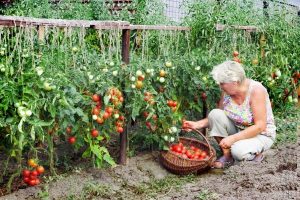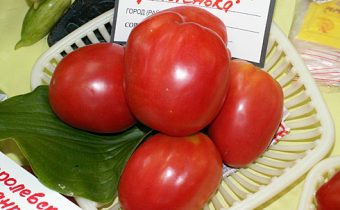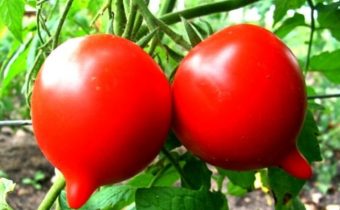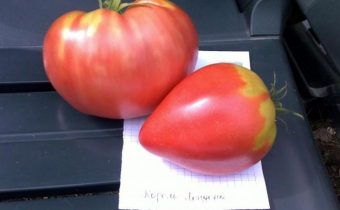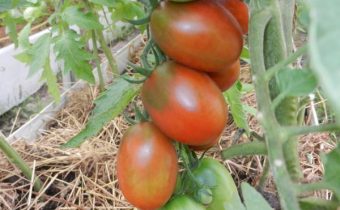Why tomatoes sour taste, what to do?
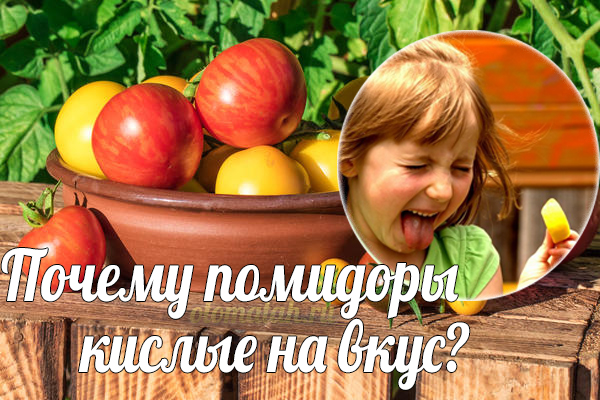
Sometimes even a proven variety of tomatoes brings sour, tasteless fruit. The reason may be the weather or violations of the care of the plant. If the situation repeats from year to year, the problem should be sought in variety, climate inconsistency, inappropriate conditions for growing the crop.
"Wrong" grade
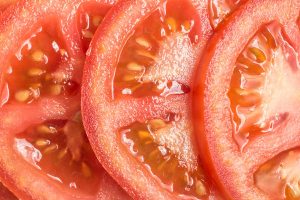
Experienced gardeners pay attention to the chemical composition of the vegetable. Sweet tomato varieties are characterized by a high percentage of sugar content, low content of acids and a greater proportion of dry substances than acidic fruits.
This does not mean that a sweet tomato cannot be juicy. For example, cherry tomatoes are very sweet, but have tender, almost berry pulp. Dry substances are sugars, protein, vitamins, fats, essential oils. Therefore, their concentration indicates the richness and richness of the taste of the fruit, and not the density of the pulp. At the same time, carbohydrates account for 50% of dry substances, so the indicators of sugar content and volume of dry substances are directly related.
Important!
Among hybrid tomatoes acidic are more common than among varietal. Middle and late varieties in this sense are more reliable than early tomatoes.
The appearance of acid in the fruit is possible, even if the variety is sweet, but zoned for a more southern region. Tomatoes, adapted to other climatic conditions, do not have enough light and heat to accumulate sugars in fruits.
Unsuitable conditions
If the gardener tried different varieties, but the tomatoes are stably acidic, it may be the case in the ground or in the place of planting bushes. A frequent cause becomes improper watering or lack of nutrition.
Weather effect
Fruits of sweet tomato varieties may acquire a sour taste if the summer season is rainy. In this case, the plants simultaneously experience a lack of light and an excess of moisture in the soil. The stagnation of water increases the proportion of acids in the juice of the fruit, and the lack of sun prevents the accumulation of dry matter and, accordingly, sugars.
- Tomatoes growing on open ground, cover the removable canopy, limiting the amount of moisture supplied to their roots with precipitation.
- Make extra feeding with potassium. In a rainy summer, plants need more fertilizer, because nutrients are washed out faster from the soil. But the lack of potassium in the first place will negatively affect the taste of tomatoes.
- Add fertilizing foliar method. In cool and cloudy weather, the roots absorb nutrients worse.
- Give foliar fertilizing with magnesium sulfate (15 g of substance per 10 liters of water) 2 times a month. This trace element improves fruit taste and participates in the processes of photosynthesis, stimulation of which is necessary in conditions of lack of sun.
Landing place
For sweet tomatoes, the bush must be at least 8 hours a day in direct sunlight. If there is no such place in the territory, preference should be given to areas where the morning rays penetrate.
In some regions, tomatoes can be grown only in greenhouses, but the greenhouse has its drawbacks, including the lack of light, which is so scarce in northern summer.
It is necessary:
- Choose materials with good light transmittance for the greenhouse. In the first place is glass, in the second place is polycarbonate (it lets through about 85% of the light).
- If possible, provide tomatoes with additional illumination with phytolamps.
- Do top dressing with magnesium sulfate.
Unsuitable ground
 The cause of sour taste may be excessive acidity of the soil. The optimal indicator for tomatoes is 6.5-7Ph.
The cause of sour taste may be excessive acidity of the soil. The optimal indicator for tomatoes is 6.5-7Ph.
Liming the soil before planting is recommended, with:
- if the ground is sandy, every 3 years you need to make 150-200 g of lime per 1 m2;
- if the soil is clay, make 400-600 g of lime every 6-9 years.
Lime can be replaced by a similar volume of chalk, dolomite flour or shell rock. The ideal option would be wood ash - not only deoxidizes, but also saturates the soil with potassium. Ashes to reduce the acidity of the soil will require twice as much as lime.
On a note!
On soil acidity indicates intensive growth at the site of such weeds as plantain, horsetail, sorrel, buttercup, oxalis.
Agrotechnical violations
 To grow a large crop of tasty fruits, you must comply with all rules for the care of culture, but some of them have a greater influence on the taste of tomatoes:
To grow a large crop of tasty fruits, you must comply with all rules for the care of culture, but some of them have a greater influence on the taste of tomatoes:
- During the period of ripening of the fruits under the bush, it is necessary to introduce at least one feeding containing phosphorus and potassium. This feeding contributes to the saturation of the fruits of tomatoes with fructose, so that their taste becomes sweeter. Nitrogen fertilizers are not recommended at this time.
- Watering tomatoes should not be too often, but to prevent the drying of the soil is impossible. Optimally - 1-2 times a week, depending on the drying rate of the topsoil. During the ripening of the fruits, each bush requires about 7-9 liters.
- Tomatoes, it is desirable to give full ripen on the bush. Fruits ripening on the windowsill often lose sweetness.
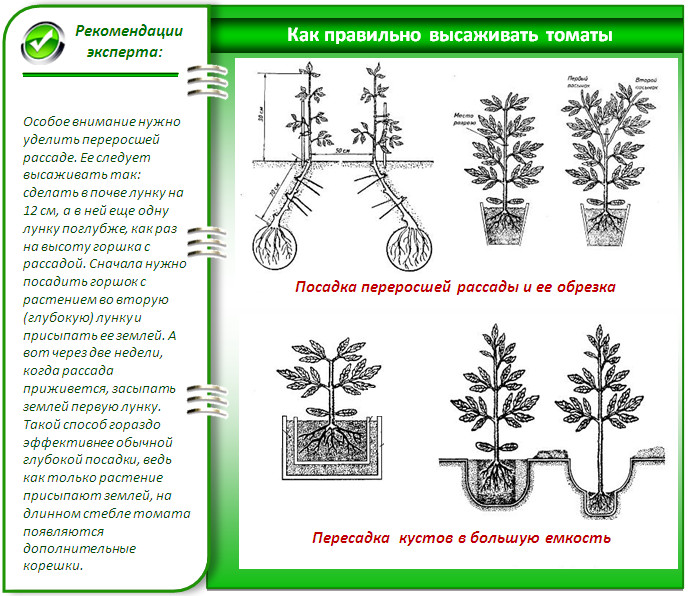
How to feed tomatoes
When choosing a fertilizer for fertilizing during the fruiting period, it is necessary to take into account that not all sources of phosphorus and potassium are well combined with each other. In addition, potassium chloride should not be used to fertilize tomatoes.
Feeding options:
- Potassium monophosphate. Good feeding to prevent the appearance of a sour taste in tomatoes, because it contains both phosphorus and potassium. It is advisable to use a granular form of the drug, as the powder is poorly soluble in water with high rigidity. For irrigation, it is necessary to prepare a 0.15% solution of the agent, for spraying - 0.02%. Under the shrub give 1/4 buckets, for the season allowed 2 root dressing with a break of 2 weeks. Sprayed between irrigations using fine spray guns. Leaves after spraying should be covered with a wet film, it is not recommended to allow the appearance of flowing drops. In rainy summer foliar application should be done after heavy or prolonged rains.
- Potassium nitrate and superphosphate. For irrigation in 10 liters of water dissolve 20 grams of saltpeter and 2 tablespoons of superphosphate. This feeding can be done no later than a month before the harvest.
- Potassium sulfate. For the root feeding of tomatoes, a tablespoon of powder is diluted in a bucket of water. For extra root - 1 gram of agent in a liter of water. The disadvantage of this substance is that it can not be mixed with available sources of phosphorus - with superphosphate or wood ash. You can make a phosphate dressing under the root, and potassium sulfate - foliar method.
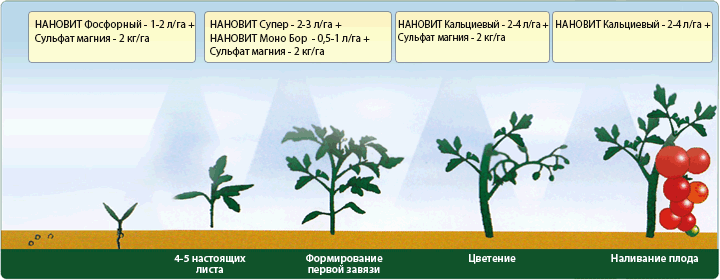
Tip!
Shortly before the ripening of tomatoes need to completely stop watering. After the ripe fruits are removed from the bush, irrigation is resumed.
Feeding with micronutrients
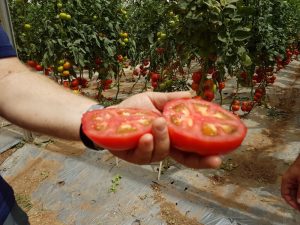 The plant's need for iodine and boron is small, but their deficiency will manifest itself in the sour taste of the fruit.
The plant's need for iodine and boron is small, but their deficiency will manifest itself in the sour taste of the fruit.
For root iodine dressing You need to dissolve 3 drops of the drug in 10 liters of warm water. Watering is carried out at the rate of 1 liter per bush, for low-growing plants 0.7 liters is enough. For foliar feeding, 1 liter of water should be mixed with 250 ml of milk and 5 drops of iodine.
Boron is better absorbed by leaves than by roots. At the beginning of the fruiting period it is necessary to spray the bushes with a 1% solution of boric acid.
Sweet varieties
There are sweet varieties and hybrids of tomatoes that are resistant to cool temperatures. They are grown in the middle lane in the open field.
Early varieties:
- Camellia tomato - fruits up to 800 g in weight, bright pink color;
- Raspberry giant - up to 700 g, raspberry;
- Bagheera - 200-250 g, red;
- Melody - 180-230 g, red;
- Snow leopard - about 150 g, red;
- Irina - 100-120 g, red;
- Snowdrop - 100-120 g, red-pink;
- Riddle - up to 100 g, red, very early;
- Honey drop - about 30 g, yellow.
Varieties of medium early ripening:
- Orange strawberries - from 300 to 700 g, orange;
- Honey Spas - 200-600 g, orange;
- Appetizing - about 400 g, burgundy;
- The grandee (Budenovka) - 150-250 g, reach 600 g, raspberry;
- One hundred pounds - 150-300 g, red;
- Tolstoy - 100-120 g, red;
- Roma - 80 g, red, long term fruiting.
Varieties of medium ripening:
- Eagle's beak - from 300 to 800 g, come in from light pink to crimson;
- Pink honey - about 600 g, some fruits reach 1500 g, pink;
- Hospitable - up to 600 g, red;
- King of Siberia - 300-400 g, yellow-orange;
- Golden Koenigsberg - up to 300 g, orange;
- Tsar Bell - 200-350 g, up to 600, red;
- Jubilee Tarasenko - 80-100 g, red.
Some varieties with high sugar content can be grown only in the greenhouse.
Early varieties:
- Tsarin - 290-300 g, can reach 600 g, red;
- Coral reef - 300-320 g, red;
- Malachite Box - 250-300 g, green;
- Major - 200-270, raspberry;
- Fire - 150-180 g, red;
- Waterfall - 20-25 g, orange;
- Magic Harp - 20 g, orange;
- Bead - 15 g, red.
Varieties of medium ripening:
- Alexander the Great - 300-350 g, up to 500 g, dark red;
- Bullish heart - about 300 g, red, can be grown on open ground, but in the greenhouse the yield is higher;
- Carbon - 200-300 g, cherry chocolate;
- Masha - 200-400 g, red.
Late varieties:
- Striped chocolate - 350-500 g, brown with red stripes;
- Bison heart - 200-300 g, green with stripes of brown and red hue;
- Marvelous - 250-400 g, purple;
- De Barao - 60-90 g, pink, there are yellow, red and black varieties.
Despite the importance of fertilizing for tomatoes, you should not make a major bet on them. Excess fertilizer is more harmful than deficiency. The selection of sweet varieties, the proper care of the plant are the main points of the plan for the struggle for the sweetness of the fruits, and timely top dressings put a winning point in it.

